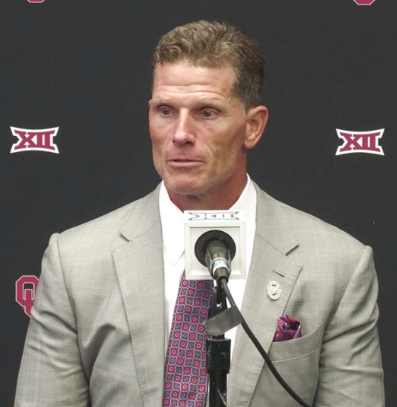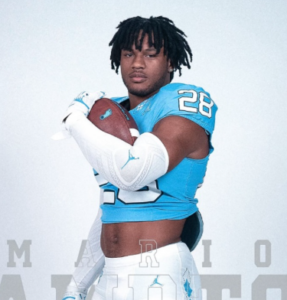Brent Venables and Oklahoma are set to benefit tremendously from the post-April financial shift in college football
With $20.5 million in additional revenue-sharing funds, the Sooners have an opportunity to solidify their position as a dominant force in the sport.
However, the broader implications of this settlement will continue to unfold in the coming years. How schools balance revenue-sharing with NIL opportunities, roster management, and overall financial stability will shape the future of college football for decades to come.
Brent Venables’ approach to navigating the NIL era in college football is a blend of tradition and adaptation. While he remains cautious about the impact of NIL on college athletics, he is actively working to ensure that his players are prepared for success beyond football.
Through academic excellence, financial literacy, personal development, and leadership training, Venables is building a program that prioritizes long-term success over short-term gains. His ‘Soul Mission’ initiative is a testament to his commitment to shaping well-rounded individuals who can thrive in any field they choose.
In an era where financial incentives often take center stage, Venables’ philosophy serves as a reminder that true success is built on character, discipline, and a commitment to continuous growth.
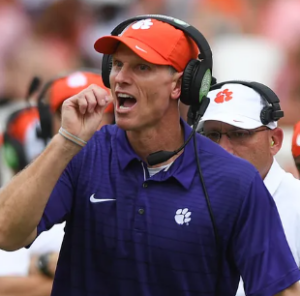
Also Read: Who Are Bradyn Swinson’s Parents? Family, NFL Career and More
Table of Contents
Brent Venables’ Approach to Navigating the NIL Era in College Football
College football has undergone a seismic shift with the introduction of Name, Image, and Likeness (NIL) deals and revenue-sharing models.1
Players now have the opportunity to earn substantial sums while still in school, significantly altering the traditional structure of team-building and roster management.
However, not everyone in the coaching fraternity fully embraces these changes, and Brent Venables, head coach of the Oklahoma Sooners, has made his stance clear.
Venables’ Reluctance Toward the NIL-Driven Era
Venables has long been a proponent of developing athletes beyond just their football careers. His concern is that the allure of NIL deals may overshadow the fundamental aspects of personal and professional growth.
While he acknowledges the financial opportunities these agreements bring, he firmly believes that student-athletes must focus on a well-rounded development that extends beyond the gridiron.
THANK YOU @Realrclark25 for keeping it REAL with TEAM 130.
Your message & authenticity was humbling & nothing short of FANTASTIC☝🏾An Honor to have you in the building…
B⭕️⭕️MER https://t.co/pHgZMvXkVA— Brent Venables (@CoachVenables) August 26, 2024
The Balance Between Money and Personal Growth
In a conversation with Josh Pate on “Josh Pate’s College Football Show,” Venables emphasized the importance of looking beyond immediate financial gains. He urges his players to cultivate habits that will serve them well in life after football.
“We just had our fifth straight record-setting semester, academically over a 3.0 team GPA, and we have 51 business majors as the top major on our team,” Venables stated.
This marks a significant shift from the past, where academic achievements were not as prioritized within the team culture.
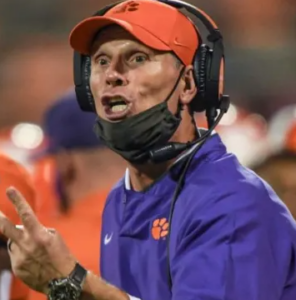
Brent Venables: Importance of Academics and Financial Literacy
Venables has taken a firm stance on academic excellence, believing that education is a crucial foundation for a successful future.2
His emphasis on maintaining a high GPA and encouraging business majors within the team is a testament to his commitment to holistic player development.
Beyond academics, financial literacy is another area where he sees the need for improvement. Many college athletes may earn substantial money through NIL deals, but without proper financial education, managing wealth becomes a challenge.
Venables warns that even high earnings during college can vanish quickly if players are not equipped with the skills to sustain financial stability.
The ‘Soul Mission’ Program: A New Direction for the Sooners
To address these concerns, Oklahoma has introduced the ‘Soul Mission‘ program, a player development initiative aimed at fostering growth beyond sports.
The program focuses on academic excellence, financial education, character-building, and preparing for life after football.
The core agenda of the program includes:
- Acing Academics: Encouraging players to maintain strong academic records and pursue meaningful degrees.
- Financial Literacy: Educating athletes on money management, investments, and long-term financial planning.
- Career Development: Preparing players for opportunities beyond football, ensuring they have viable career paths.
- Personal Growth: Instilling values and habits that contribute to a well-rounded and successful life.
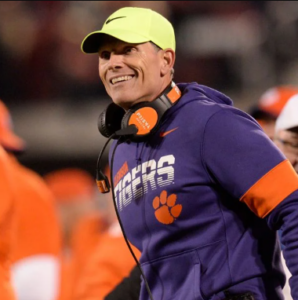
Brent Venables: Mindset Shift
The Key to Success
One of the most significant transformations under Venables’ leadership is the shift in mindset among players.3
He believes that success is largely driven by daily habits and strong personal values.
“You become whatever your strongest thoughts are and whatever your strongest habits are,” Venables remarked.
He instills this philosophy in his team, encouraging them to show up every day with a commitment to excellence, whether in the classroom, on the field, or in personal development.
Preparing for Life After Football
Venables is acutely aware that a football career, no matter how successful, has a limited lifespan. He wants his players to have a plan for life after their playing days are over.
“You play this game a long time, but that day is coming quickly when you got to hang the cleats up. Now, what’s next?” he said. This rhetorical question underscores the need for long-term planning beyond sports.

NIL as an Opportunity, Not a Distraction
Despite his reservations, Venables acknowledges that NIL opportunities can be beneficial when handled correctly. His approach is not to dismiss NIL outright but to integrate it into a broader strategy of personal and professional growth.
By encouraging players to be smart about their earnings and investments, he aims to help them avoid financial pitfalls that have plagued many former athletes. NIL, in his view, should be seen as a tool for success rather than a shortcut to wealth.
The Role of Leadership in Player Development
Coaches play a pivotal role in shaping the future of their players, and Venables takes this responsibility seriously. He sees himself not just as a football coach but as a mentor who prepares young men for the realities of life.
By instilling discipline, resilience, and a strong work ethic, he ensures that his players are equipped to handle challenges both on and off the field.
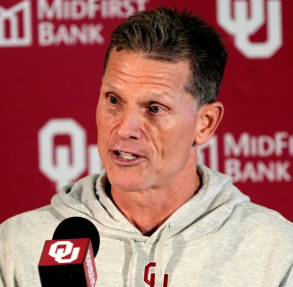
Also Read: NFL Fans Go Wild as Malaki Starks Puts on a Show at Georgia Bulldogs’ Pro Day and Partnership
Brent Venables and the $20.5 Million Revenue-Sharing Boost
A New Era of Revenue Sharing in College Football
The landscape of college football is set to change dramatically post-April, thanks to the House vs. NCAA settlement.
This legal resolution mandates that participating schools receive $20.5 million annually for revenue-sharing purposes.
This significant financial shift will alter how programs allocate resources, recruit players, and structure their rosters.
One of the biggest beneficiaries of this new revenue-sharing model is Oklahoma head coach Brent Venables. As a leading figure in the sport, Venables and his program will see a notable impact from these funds.
But what exactly does this mean for Oklahoma and other college football programs? Let’s break it down.
The Role of Brent Venables in Oklahoma’s Financial Strategy
Brent Venables, known for his defensive expertise and high-energy coaching style, is expected to play a crucial role in managing these funds effectively.
The allocation of $20.5 million per school will enable Oklahoma to enhance its football program, but Venables must determine the best way to distribute these resources.
Since Venables took over as head coach, Oklahoma has focused on rebuilding and strengthening its roster. With the influx of revenue-sharing funds, the program can now:
- Increase recruitment budgets
- Improve facilities and training programs
- Provide additional benefits for players
- Retain top talent amidst the increasing competitiveness of the NIL (Name, Image, Likeness) market
How the $20.5 Million Will Be Distributed?
The financial structure of this revenue-sharing model is designed to support multiple aspects of a football program.
While each school will receive the same amount, the internal breakdown of funds will vary based on program priorities.
1. Recruitment and Roster Management
The biggest portion of this money is expected to be allocated toward recruiting top-tier talent. With competition at an all-time high, schools must invest in:
- Travel and scouting expenses
- Recruiting events and showcases
- Enhanced scholarships and benefits for incoming players
2. Facility Upgrades and Technological Advancements
Oklahoma has always prioritized cutting-edge training facilities, and this new financial boost will help maintain and improve its resources. Investments in:
- Weight rooms and conditioning centers
- Sports analytics and performance tracking technology
- Locker room and stadium upgrades will ensure that Oklahoma remains an attractive destination for elite athletes.
3. Coaching and Support Staff Salaries
The additional revenue may allow Oklahoma to retain key coaching staff members and attract new, high-caliber assistants. Competitive salaries are essential in keeping top coaching talent away from rival programs or professional leagues.

Brent Venables: Controversies Surrounding the Settlement
While the $20.5 million allocation seems like a massive win for college football programs, it does not come without its challenges and controversies.
1. Equitable Distribution Among Athletes
One key question remains: how will the funds be distributed among players? While some believe that all scholarship players should receive an equal share, others argue that star athletes—who bring in more revenue—should receive a larger cut.
This could lead to tensions within locker rooms and spark debates about fairness in college athletics.
2. Impact on Smaller Programs
Larger programs like Oklahoma will likely benefit greatly from this revenue-sharing model. However, smaller programs with less national exposure may struggle to compete, even with an equal distribution of funds.
Recruiting battles will likely become even more difficult for mid-tier and lower-tier programs.
3. Long-Term Sustainability
The biggest concern for many athletic directors is whether this model is financially sustainable in the long run.
If television contracts, sponsorships, or ticket sales decline, will schools be able to maintain these revenue-sharing distributions? Additionally, some programs may need to find creative ways to supplement their budgets, further increasing the gap between powerhouse programs and smaller schools.
The NIL Factor: How Does It Play a Role?
One of the biggest uncertainties in this new system is how the NIL landscape will intersect with revenue-sharing.
NIL has already provided college athletes with the ability to earn money independently through endorsements and sponsorships. Now, with schools receiving a structured revenue-sharing payout, questions arise about:
- Whether NIL opportunities will be capped or restricted
- If players can still negotiate deals outside of the allocated funds
- How the NCAA will regulate revenue-sharing alongside NIL agreements
Some analysts predict that schools with strong NIL collectives will have a significant advantage.
If programs can leverage both NIL deals and revenue-sharing funds, they can create lucrative financial packages for players, making them more attractive destinations for recruits.
Also Read: Warren Sapp Shares Insights on Coaching Challenging Players at Colorado and Press Conference
